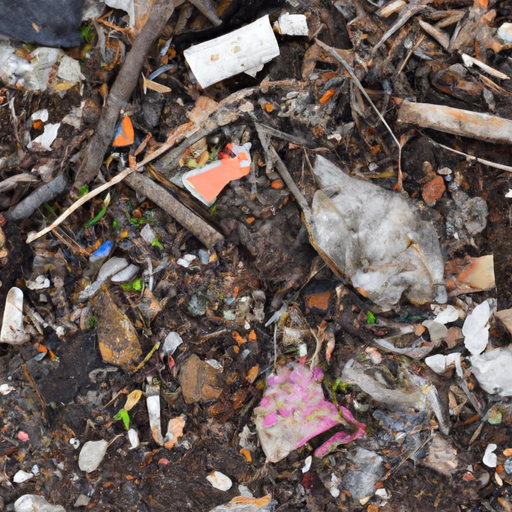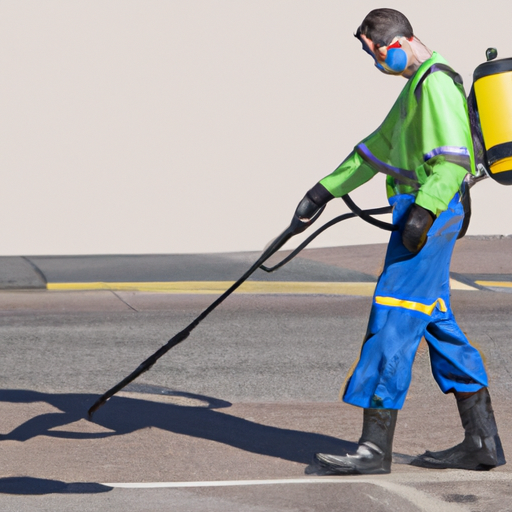Discover the ins and outs of road cleaning in our comprehensive guide designed for beginners. Dive deep into the world of road sanitation and maintenance, understanding the right tools, techniques, and safety measures that are essential to keep our roads clean and safe. An absolute must-read for city workers, volunteers, and anyone interested in public service.
1. 'The Dirt on Roads': What Makes Road Cleaning Essential?
Road cleaning may seem like a mundane task, but it plays a crucial role in maintaining the safety and functionality of our roadways. The accumulation of dirt, debris, and litter on roads can have significant consequences for drivers, pedestrians, and the overall infrastructure. When roads are not regularly cleaned, the buildup of dirt and debris can impair visibility, leading to accidents and hazards for motorists. Additionally, debris on the road can cause damage to vehicles, leading to costly repairs for drivers. Regular road cleaning is essential to ensure the smooth flow of traffic, prevent accidents, and maintain the integrity of our roadways.
Furthermore, road cleaning is not just about aesthetics; it also has a significant impact on the environment. As vehicles pass over dirty roads, pollutants such as oil, chemicals, and litter can be dislodged and washed into nearby water sources, causing water pollution. This pollution can harm aquatic life and contaminate drinking water supplies. Road cleaning helps prevent these pollutants from entering our waterways, preserving the health of ecosystems and ensuring clean water for communities.
Moreover, road cleaning plays a vital role in preventing the accumulation of hazardous materials on roads. Spilled oil, chemicals, or other hazardous substances can pose serious risks to both human health and the environment. Regular cleaning helps identify and remove these hazardous materials promptly, preventing them from causing further damage or harm. By keeping roads clean and free from debris, we can minimize the potential for accidents, protect our environment, and ensure the safety and well-being of everyone who uses our roadways.
1. A picture showing the different types of debris commonly found on roads.
2. 'The Right Tools for the Job': What Equipment is Needed for Road Cleaning?
When it comes to road cleaning, having the right tools is essential to ensure efficient and effective results. One of the most common tools used for road cleaning is a street sweeper, which is specifically designed to remove dirt, debris, and litter from road surfaces. Street sweepers come in various sizes and configurations, including mechanical broom sweepers and vacuum sweepers. Mechanical broom sweepers are equipped with rotating brushes that sweep debris into a collection bin, while vacuum sweepers use powerful suction to lift and collect debris.
In addition to street sweepers, other equipment commonly used for road cleaning includes pressure washers and air blowers. Pressure washers use high-pressure water jets to remove stubborn stains, oil spills, and other contaminants from road surfaces. They are particularly effective in removing dirt and grime that may be deeply embedded in the pavement. Air blowers, on the other hand, are used to dislodge and remove loose debris such as leaves, dust, and sand from roadways. These tools are especially useful for cleaning sidewalks, bike lanes, and other areas where a street sweeper may have limited access.
Furthermore, road cleaning also requires the use of personal protective equipment (PPE) to ensure the safety of the workers. This includes high-visibility vests, gloves, safety goggles, and sturdy footwear. PPE helps protect workers from potential hazards such as flying debris, chemical spills, and traffic accidents. It is important to prioritize safety and ensure that all necessary PPE is worn and properly maintained during road cleaning operations.
3. 'Safety First': What Safety Measures Should You Take While Cleaning Roads?
When it comes to road cleaning, safety should always be the top priority. Here are some important safety measures that should be taken while cleaning roads:
- 1. Traffic Control:
One of the most crucial safety measures is implementing proper traffic control. This includes setting up signage, cones, and barriers to redirect traffic away from the cleaning area. It is essential to have trained personnel to manage traffic flow and ensure the safety of both workers and motorists. Additionally, using flaggers or traffic control devices can help provide clear instructions and warnings to drivers approaching the cleaning site. - 2. Personal Protective Equipment (PPE):
Wearing appropriate personal protective equipment (PPE) is essential for the safety of workers. This includes high-visibility vests, hard hats, safety goggles, gloves, and steel-toed boots. High-visibility vests ensure that workers are easily seen by passing motorists, reducing the risk of accidents. Hard hats protect against falling objects, while safety goggles shield the eyes from debris and chemical splashes. Gloves protect hands from cuts, bruises, and exposure to harmful substances, and steel-toed boots provide foot protection in case of accidents or falling objects. - 3. Proper Training:
Adequate training is vital for all workers involved in road cleaning. They should be trained on proper equipment operation, safety protocols, and emergency procedures. This includes understanding the correct use of equipment, such as street sweepers and pressure washers, as well as knowing how to handle potentially hazardous materials, such as chemicals or biohazardous waste. Additionally, workers should be trained in first aid and CPR, ensuring they can respond promptly to any injuries or medical emergencies that may occur.
3. An image portraying a road cleaner in full safety gear, demonstrating its correct usage.
4. 'Clean Roads, Safe Roads': How Does Road Cleaning Benefit the Community?
Keeping the roads clean is not just about aesthetics; it has a significant impact on the safety and well-being of the community. Here are several ways in which road cleaning benefits the community:
- 1. Improved Road Safety:
Clean roads are essential for ensuring the safety of motorists, cyclists, and pedestrians. Removing debris, such as leaves, branches, or litter, prevents potential hazards that could cause accidents. By regularly cleaning the roads, visibility is improved, reducing the risk of collisions and providing a safer environment for all road users. - 2. Prevention of Drainage Issues:
Road cleaning plays a crucial role in preventing drainage issues. Accumulated debris can clog drains and gutters, leading to waterlogging and flooding during heavy rainfall. By removing debris and keeping drains clean, road cleaning helps maintain proper water flow, reducing the chances of flooding and water damage to properties. - 3. Enhanced Air Quality:
Clean roads contribute to improved air quality in the community. Dust, dirt, and pollutants that accumulate on roads can become airborne, affecting the air residents breathe. Regular road cleaning helps reduce the amount of dust and pollutants in the air, leading to cleaner and healthier surroundings. - 4. Aesthetics and Community Pride:
Clean roads create a positive impression and promote community pride. A well-maintained road network reflects a sense of pride and care for the community. It enhances the overall aesthetics of the area, making it more appealing to residents and visitors alike. - 5. Economic Benefits:
Road cleaning also brings economic benefits to the community. Cleaner roads attract businesses, tourists, and potential investors. A clean and well-maintained road network creates a positive image for the community, leading to increased economic activity and opportunities for growth.
Essential Road Cleaning Tools:
| Tool | Purpose | Safety Measures | Special Skills |
|---|---|---|---|
| Power Washer | High-pressure cleaning of roads | Eye protection and safety gloves | Experience with power tools and machinery |
| Street Sweeper | Sweeping up debris and dirt | Safety gear such as ear protectors | Ability to operate a large vehicle |
| Shovel | Removing debris and dirt from roads | Gloves, protective clothing, and safety boots | Experience with manual labor |
| Broom | Sweeping up debris and dirt | Gloves and dust masks | Ability to use a broom effectively |
Road cleaning is no simple task, but with the right knowledge and tools at your disposal, it can become a rewarding experience. This guide has equipped you with the necessary information to dive into this often overlooked field. Remember, a clean road is not only visually appealing, it's safer for everyone. So, next time you're on the road, remember this guide and the difference you can make.



